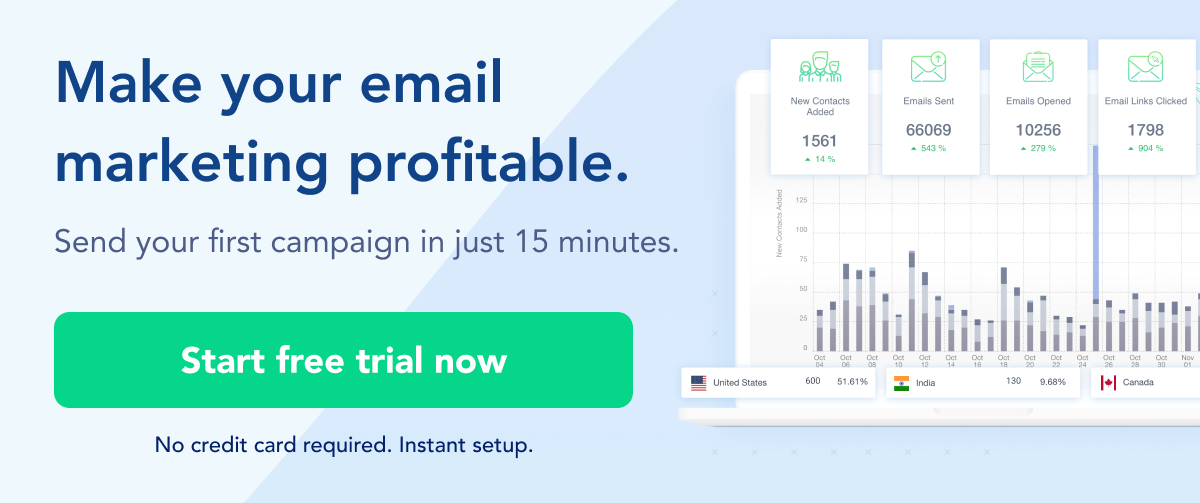In the vast digital landscape, where attention is scarce and competition is fierce, email marketing stands as a beacon for businesses aiming to forge meaningful connections with their audience. This extensive guide navigates through the intricacies of building a robust email marketing strategy.
We begin by defining an email marketing strategy, understanding its paramount importance, and unraveling the indispensable role of templates in simplifying this intricate process.
A. Definition of Email Marketing Strategy
An email marketing strategy is the compass that guides businesses through the dynamic realm of digital communication. It's a meticulously crafted plan outlining campaign objectives, target audiences, and content approaches. In essence, it's the blueprint for effective and purposeful email campaigns.
B. Importance of a Well-Defined Strategy
A well-defined email marketing strategy is the bedrock of success. It ensures purposeful communication, heightened audience engagement, and measurable success. In the crowded digital space, where messages vie for attention, a clear strategy becomes the linchpin for sustained growth and brand resonance.
C. Role of Templates in Simplifying the Process
Templates emerge as unsung heroes in the email marketing journey. They provide structured frameworks that simplify the content creation process, ensuring consistency and visual appeal. Templates streamline the intricacies of design, allowing marketers to focus on content and strategy rather than getting bogged down in technical details.
Table of Contents
Email Marketing Strategy Template:
|
Section |
Key Components |
|
1. Goals & Objectives |
Define measurable objectives and desired outcomes. |
|
2. Target Audience |
Identify and segment the target audience effectively. |
|
3. Content Strategy |
Plan compelling and relevant content for each segment. |
|
4. Campaign Schedule |
Establish a timeline for email deployment and follow-up. |
|
5. Key Metrics |
Determine and track key performance indicators. |
|
6. A/B Testing |
Incorporate testing methods for optimization. |
Understanding Your Audience
Understanding the audience is not just a preliminary step but an ongoing process that informs every facet of a successful email marketing strategy. This section explores the significance of intimately knowing the target audience, the transformative impact of audience segmentation, and the strategic use of templates to tailor content for diverse segments.
A. Importance of Knowing Your Target Audience
Knowing the target audience is akin to understanding the pulse of your business. The more intimately a business comprehends its audience, the more effectively it can tailor content to their preferences. This not only ensures relevance but fosters a deeper connection that transcends the transactional nature of emails.
B. How Audience Segmentation Enhances Email Effectiveness
Audience segmentation is the key to unlocking personalized communication. By dividing the audience into segments based on demographics, behavior, or preferences, businesses can craft targeted messages that resonate more deeply. Templates play a pivotal role here, allowing for customization tailored to the specific needs of each segment.
C. Using Email Templates to Tailor Content for Different Segments
Email templates, versatile in their application, facilitate the seamless customization of content for different audience segments. Whether it's a promotional offer for one group or a newsletter for another, email templates provide the framework for personalized communication that speaks directly to the unique interests and needs of each segment.
Setting Clear Goals
Goals provide the roadmap for success. This section delves into the art of goal setting, emphasizing the importance of defining specific, measurable, and achievable goals. It explores the alignment of these goals with overall business objectives and illuminates how templates play a crucial role in structuring content to meet these goals.
A. Defining Specific, Measurable, and Achievable Goals
Clear, concise, and attainable goals are the backbone of a successful email marketing strategy. By articulating goals in a Specific, Measurable, Achievable, Relevant, and Time-bound (SMART) format, businesses set the stage for focused and effective campaigns.
B. Aligning Goals with Overall Business Objectives
Goals in isolation can be shortsighted. Aligning email marketing goals with broader business objectives ensures that every campaign contributes meaningfully to the overarching success of the organization. It establishes a symbiotic relationship where marketing efforts fuel business growth.
C. How Templates Help Structure Content to Meet Goals
Templates serve as the architectural framework for content alignment with specific goals. Whether the objective is to drive sales, increase engagement, or foster brand loyalty, templates provide a structured canvas for crafting content that resonates with the intended goals.
Choosing the Right Email Template
Selecting the right email template is akin to choosing the appropriate tool for a job. This section provides an overview of the different types of email templates, explores factors to consider when making a selection, and underscores the importance of customization options for branding and personalization.
A. Overview of Different Types of Email Templates
Diverse Email Types: Newsletters, promotions, and announcements offer varied communication styles, demanding distinct templates for optimal engagement.
Strategic Alignment: Marketers benefit by understanding the nuances of each email type, allowing precise template selection based on campaign objectives.
Campaign Empowerment: Choosing the right template enhances campaign effectiveness, ensuring targeted and impactful communication with the audience.
Objective-Focused Templates: Aligning templates with campaign goals facilitates a cohesive strategy, improving the overall performance and impact of email marketing initiatives.
B. Factors to Consider When Selecting a Template
The selection of an email template is a strategic decision. Marketers must consider factors such as the purpose of the email, the characteristics of the target audience, branding requirements, customization options, and compatibility with email marketing platforms.
C. Customization Options for Branding and Personalization
Templates, when appropriately customized, become an extension of a brand's identity. This section explores the myriad customization options available, from incorporating branding elements to tailoring content for personalization. Customization ensures that each email not only adheres to brand guidelines but also resonates with the individual preferences of the recipients.
Crafting Compelling Content
Compelling content is the lifeblood of any email campaign. This section delves into the significance of engaging and relevant content, explores how templates can be leveraged for effective storytelling, and offers tips for maintaining a consistent brand voice across diverse campaigns.
A. Importance of Engaging and Relevant Content
Content is king, and relevance is its kingdom. Engaging and relevant content is the driving force behind successful email campaigns. It captivates attention, fosters connection, and compels recipients to take desired actions.
B. Utilizing Template Elements for Effective Storytelling
Storytelling adds depth and resonance to email campaigns. Templates, with their structured elements, provide a canvas for effective storytelling. From compelling narratives to sequential content delivery, templates offer a framework for weaving a cohesive and impactful story.
C. Tips for Maintaining a Consistent Brand Voice
Consistency in brand voice is the thread that stitches together diverse campaigns into a cohesive narrative. This section offers practical tips for maintaining a consistent brand voice, ensuring that each email, despite its unique content, contributes to the overarching brand story.
Incorporating Visual Elements
Visual elements are the silent storytellers in email campaigns. This section illuminates the role of visuals in email marketing, explores how templates facilitate the inclusion of images and graphics, and outlines best practices for creating visually appealing emails.
A. Role of Visuals in Email Marketing
Visuals play a crucial role in elevating the effectiveness of email marketing campaigns, serving as powerful tools to engage and communicate with the audience. Here are key aspects highlighting the role of visuals in email marketing you can see below:
B. How Templates Facilitate the Inclusion of Images and Graphics
Templates provide a structured canvas for incorporating images and graphics seamlessly. Whether it's showcasing products, illustrating key points, or creating aesthetically pleasing designs, templates simplify the inclusion of visual elements, ensuring a visually engaging presentation.
C. Best Practices for Visually Appealing Emails
Visual Appeal Basics: Craft visually engaging emails by following best practices, covering mobile optimization, clear hierarchy, and branded visuals.
Mobile Optimization: Prioritize mobile-friendly design to ensure seamless viewing across devices, capturing audience attention and enhancing user experience.
Clear Hierarchy: Establish a visual hierarchy in emails, guiding recipients through content logically and emphasizing key messages for maximum impact.
Branded Visuals: Infuse brand elements consistently into email design, fostering brand recognition and creating a cohesive and memorable experience for recipients.
Comprehensive Guide: This section provides a detailed overview, equipping marketers with the knowledge to create visually captivating and resonant emails effectively.
Conclusion
As we draw the curtain on this comprehensive guide, it's essential to recap the key points that pave the way for an effective email marketing strategy. We then shift our focus to the importance of encouraging ongoing refinement and adaptation, acknowledging the dynamic nature of digital communication. Finally, we reflect on the enduring power of a well-crafted email marketing strategy supported by templates, recognizing its ability to foster meaningful connections and drive measurable success in the ever-evolving digital landscape.
A. Recap of Key Points
The journey began with the definition of an email marketing strategy as a comprehensive plan outlining goals, target audiences, and content approaches. The importance of a well-defined strategy became evident, serving as a compass for purposeful communication and measurable success. Templates emerged as pivotal tools, simplifying the content creation process and ensuring consistency.
Understanding the audience took center stage, emphasizing the significance of knowing the target audience intimately. Audience segmentation was explored as a transformative practice, enhancing the effectiveness of email campaigns. The strategic use of templates for tailoring content to different segments highlighted their versatility.
Setting clear goals was the next frontier, urging businesses to define goals in a SMART format and align them with broader business objectives. Templates were revealed as essential tools in structuring content to meet these goals effectively.
Choosing the right email template unfolded as a strategic decision, involving an overview of different types, considerations for selection, and customization options for branding and personalization. Crafting compelling content became the focal point, emphasizing the importance of engagement, effective storytelling, and maintaining a consistent brand voice.
Incorporating visual elements was explored, recognizing the role of visuals in capturing attention and conveying messages. The facilitation of images and graphics through templates and best practices for visually appealing emails were outlined.
B. Encouraging Ongoing Refinement and Adaptation
The digital landscape is dynamic, and success demands ongoing refinement and adaptation. Regular performance evaluations, feedback solicitation, and an adaptive approach to industry trends are crucial for sustained effectiveness. Flexibility becomes the ally in responding to changing audience behaviors and emerging technologies.
C. Final Thoughts on the Power of a Well-Crafted Email Marketing Strategy with a Template
As we conclude, it's essential to reflect on the enduring power of a well-crafted email marketing strategy supported by templates. This approach not only optimizes effectiveness but also contributes to the enduring success and relevance of a brand in the digital landscape. It becomes a potent tool for meaningful connections, resonating narratives, and measurable success. In embracing adaptability, continual refinement, and the lasting power of a thoughtfully crafted email marketing strategy, businesses can navigate the complexities of digital communication with confidence and impact.



